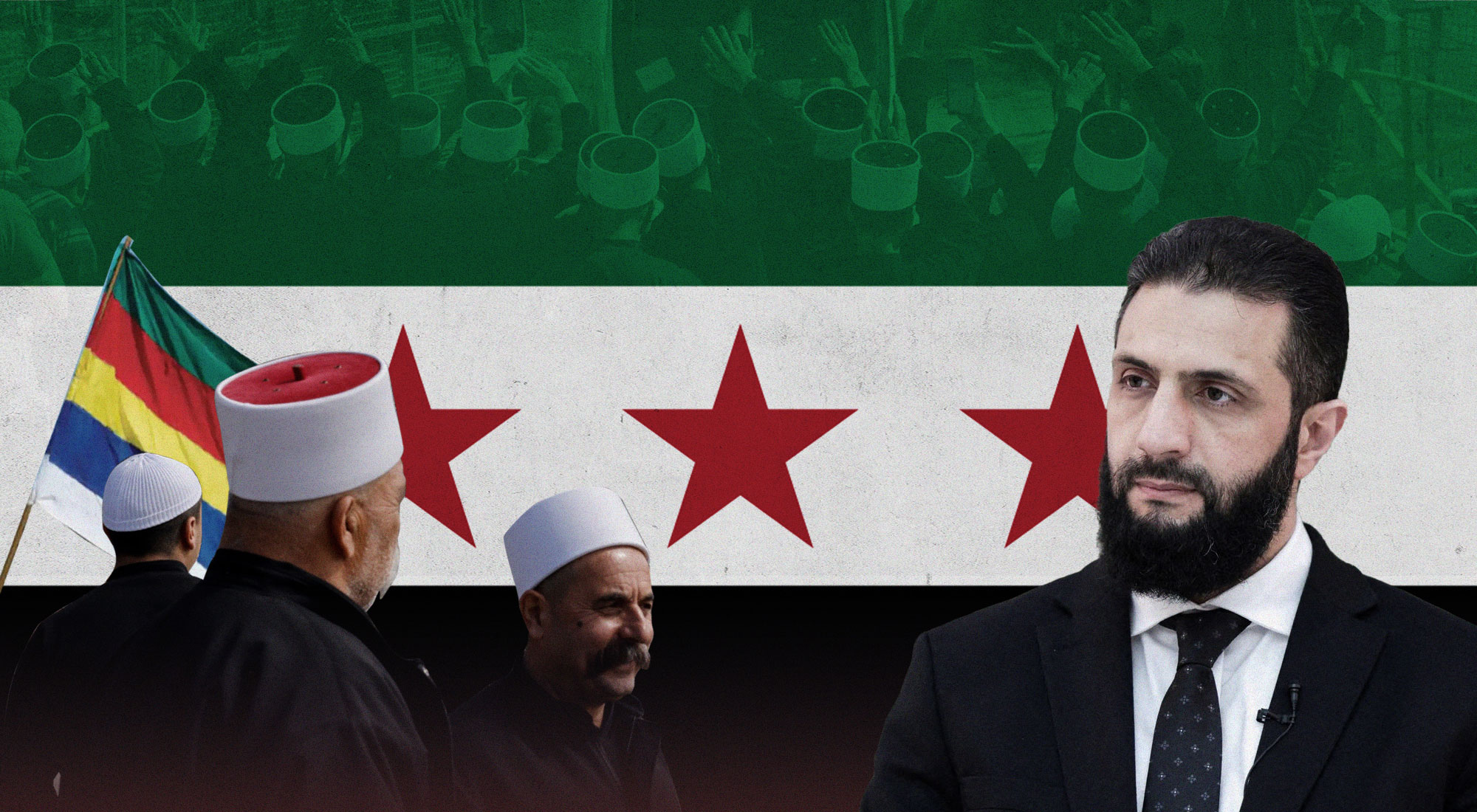
Snapshots
The Druze Factor and President Ahmad Al-Shara’s Approach
17 Jul 2025
The Syrian file is currently undergoing a state of instability due to recent events in both the Suwayda and Damascus governorates. Clashes erupted between Druze fighters and Sunni tribes following the kidnapping of a Druze merchant on the Damascus–Suwayda highway. This incident escalated into wider confrontations that eventually drew in official Syrian forces, followed by Israeli intervention through airstrikes on Damascus.
The natural response taken by President Ahmad Al-Shara’s government to contain the clashes between the Druze and Sunni tribes was the deployment of units from the Ministries of Defense and Interior to halt the fighting. However, events quickly spiraled into direct confrontations between government forces and Druze factions. These developments paved the way for Israel to intervene under the pretext of protecting the Druze. Accordingly, Israel launched airstrikes targeting tanks and government convoys near Suwayda, as well as the General Staff building, the Ministry of Defense, and areas surrounding the Presidential Palace in Damascus. Israel aimed to pressure the current government and send a message that it could disrupt Syria’s new path towards building a strong political system and advancing national development, as well as expanding Syria’s foreign relations to gain international support for its future.
Despite signs of de-escalation, such as: (1) President Ahmad Al-Shara’s speech assigning local factions and Druze religious leaders the responsibility of maintaining security in Suwayda; and (2) the statement by Sheikh Yusuf Jarbou’—one of the three “Shuyukh al-‘Aql” (chief Druze clerics) in Suwayda, along with Hamoud Al-Hanawi and Hikmat Al-Hijri—announcing an agreement with the Syrian government to cease military operations and end the presence of unauthorized arms, factors that could reignite tensions still persist. One of the clearest indicators of a potential return to violence is Sheikh Hikmat Al-Hijri’s rejection of the ceasefire, insisting instead on complete liberation from what he described as criminal gangs. Meanwhile, Sheikh Hamoud Al-Hanawi has issued no statement due to health reasons. Despite his centrist views, the position of his followers remains unclear. The most concerning factor indicating possible escalation is Israel’s position. The Israeli approach seeks to consolidate its gains by ensuring the security of Druze areas, especially since they border Israeli Druze communities in the occupied Golan Heights, Galilee, and Mount Carmel. Moreover, Israel’s behaviour suggests it is unwilling to withdraw from the southern Syrian areas it controls after the fall of President Bashar Al-Assad’s regime, and that any potential agreements for withdrawal will be difficult—if not entirely off the table.
These developments point to several possible scenarios: (1) A fragile stability: despite a declared ceasefire, security threats and sporadic clashes may persist, with the possibility of renewed escalation at any moment. (2) Increased Israeli air pressure if Syrian forces do not withdraw from Druze areas or if President Al-Shara fails to follow through on his commitments. (3) Continued military alert in Damascus, especially after Israel demonstrated its capability to strike key government sites, marking the first regional challenge President Al-Shara faces directly. (4) If no effective and long-term understandings are reached between the Syrian government and both the Druze and Israel, clashes will undoubtedly expand, particularly along the Syrian-Israeli border. (5) A less likely but possible scenario is the direct involvement of Israeli Druze in the conflict. Although firmly rejected by both Syrian and Israeli leadership, such involvement could shift the Druze mindset toward demanding a Druze state carved out of Syrian and Israeli territory—an outcome that would lead Damascus and Tel Aviv into highly undesirable complications at this time.
In all cases, President Ahmad Al-Shara’s behavior demonstrates a rational and non-escalatory approach. His handling of the situation sends a message to the West about the seriousness and effectiveness of his leadership, especially his choice not to respond militarily to Israel. This inaction in itself signals to the United States and the West that the current administration is not antagonistic toward Israeli presence. As for his message to the Druze—evident in the content of his speech—it aims to integrate them within the Syrian national framework, a significant move that reflects Al-Shara’s intent to avoid territorial fragmentation. Ultimately, the stance of the Druze and Israel will be decisive in either aligning with Al-Shara’s positive approach or resuming confrontations whose consequences will undoubtedly harm all parties involved.


